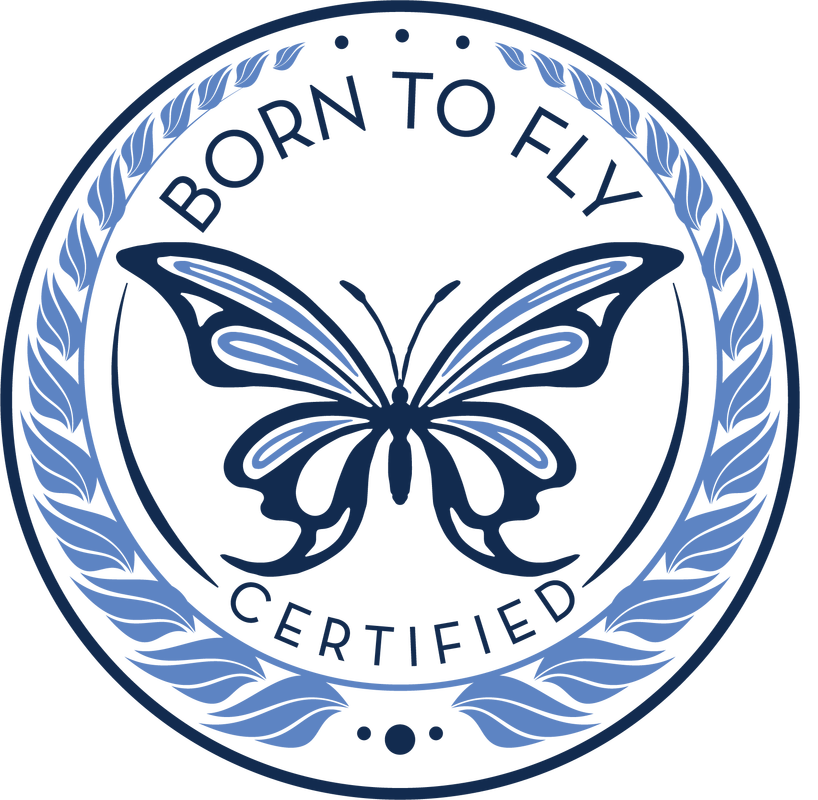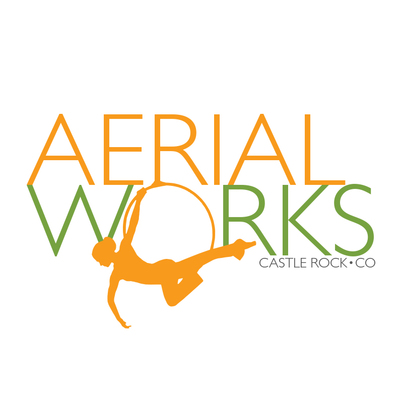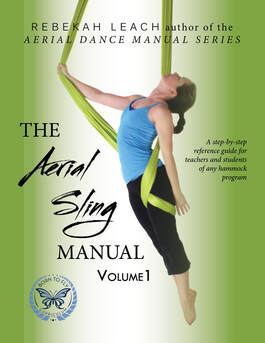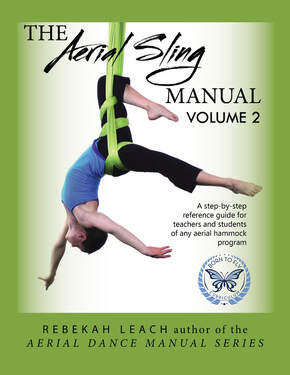"This is an absolutely fantastic training opportunity and experience!!!! Rebekah and Julianna share a wealth of knowledge and expertise, and they teach and demonstrate together as if they're of one mind.....amazing! I had the experience of a lifetime when I attended the first teacher training at Marsh Studio (the most wonderful studio and its owners who are truly very special people) in May. I came away with technical incite, many more tools in my toolbox for helping and guiding beginning students, a whole new teaching approach for developing students (yeah global learning!!!), and most importantly: life-long friends and mentors. If you're thinking of doing it...don't hesitate....sign up ASAP!!!" ~ Lorraine B.
Aerial SLING Teacher TrainingsAbout
The following courses are part of the Born to Fly™ Curriculum. All who meet the prerequisites are welcome to train with us. We no longer offer certificates, including certificate of completion, etc. If you are interested in having a sort of "check of understanding" or a recommendation of your teaching for a studio to verify that you have absorbed and understood the material, then we recommend going through our RTAP process, which is now sold separately from the teacher training, Teaching Philosophy and Methods Aerial fabric has a trend of being the most popular vertical apparatus in recreational programs. However, starting students with climbs may not be the most accessible way to begin an aerial journey. If you teach early beginners, we highly recommend (but do not require) starting the Aerial Sling 1 Teacher Training. In the Born to Fly™ methodology, we expose our students to fabric theory early on through puzzles and challenge their artistry through creative tasks. Our goal is to develop an aerialist’s strength, intelligence, and artistry simultaneously so nothing gets left behind. We ask students to spend more time with each skill, which allows them to build strength over a longer period of time before progressing to the next level. "This course went beyond my goals! I was coming just to understand anatomy and spotting techniques better. I got that as well as learned a new teaching technique that I’ve fallen in love with. The knowledge you receive is well worth the money and effort put in. I felt like a better teacher the second I walked out of the studio!" ~ Chrissy R. 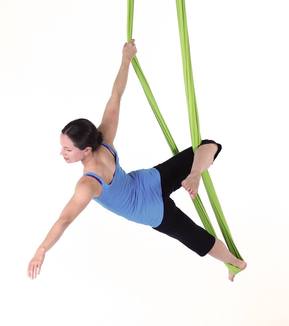
ONLINE Aerial SLING
Level 1 Teacher Training with Rebekah Leach 35+ Hrs of Online Training --includes 3 live (over zoom) hours to ask your questions and receive mentorship. Must schedule the hours within one year of purchase (and not in June or July). When: START ANYTIME Aug-May. (Our offices are closed for June & July for admin.) This is a self-paced training. Once you start, you will have access to the material for 2 years. Watch the pre-recorded training videos at your own convenience and schedule the 1-1 mentorship hours when it is convenient for you in congruence with your master teacher's schedule. Cost: $875 (plus purchase of textbooks sold separately) Included Videos: Topics & Modules included in the video lectures --sling skill-specific teacher training (going over common student issues, progressions, important cues, etc) --classroom observations so that you can see the skills being taught to real students --Shoulder Anatomy Course (includes 56 page manual) --Core Anatomy Course (includes 33 page manual) --Warm-up Course (goes over how to teach the best and most effective warm-up for aerial, includes example warm-ups) --Creative Progressions --Inversion Course --Flexibility Course Prerequisites:
Required Reading: Order book below.
Recommended Reading:
What You Will Learn: This training focuses on Level 1 Sling skills as well as anatomy for aerial teachers, how to plan the perfect warm-up, safe practices, teaching methods, and classroom management. We strongly emphasize progressions, particularly to develop a student's first inversion. You will work with the classic sling skills as well as several skills that are helpful for proper development of aerial muscles that we’ve developed over the years. Note: We are no longer issuing certifications for trainings, but we can do a courtesy "certification of completion" for training after the mentor hours are completed and videos have been watched.
Prerequisites:
Required Reading:
Recommended Reading:
Tentative Schedule (exact schedule may vary):
What You Will Learn: At this level of sling, the goal is to introduce a new student to the sling in a safe way that is accessible for students of a wide variety of backgrounds. Teachers need to feel prepared to handle everything from the super beginner to an advanced beginner (and handle them in the very same lesson plan!). It takes a true expert to successfully teach a room full of students with different abilities and yet keep everyone challenged and safely working on their own pacing through the curriculum. It is the overall goal of the Born to Fly Teacher Training program to equip teachers to handle this environment, as well as the individual goals of properly teaching the skills and concepts of an aerial program. The technique training is PERFECT for those teaching fabric and are looking for more ways to help train students while having fun. Sling is especially perfect for fabric students who are taking a bit longer to progress than other students. Don't feel like you have to push students forward if they are not ready! Give them sling! There will be an opportunity to teach a class of new sling students at the conclusion of the training. Note: We are no longer issuing certifications for trainings, but we can do a courtesy "certification of completion" for attending the training. Travel & Lodging: Please check out this page for helpful travel info. Prerequisites:
Audition Video: Email video here. Connect these skills in a sequence in any order over a crash mat at least 6" thick:
Required Reading:
Recommended Reading:
Schedule (exact schedule may vary):
What You Will Learn: At this level of sling, students should be able to perform a pull-over from standing on the ground but they may still be struggling with a cross-hip pull-over without the help of their feet pushing off the ground. The goal is to work on skills that encourage growth and having fun, all while sneaking in core-development training. The major skill topics covered in this training include cross back straddle (sling version), roll-ups (on the thigh), side back balance, arabesques, knee corset, and an introduction to hip corset, seatbelt and catcher's theory. The technique training will include inversion and other general aerial strength training. There will be an opportunity to teach a class at the conclusion of the training. Travel & Lodging: Please check out this page for helpful travel info. |
|

